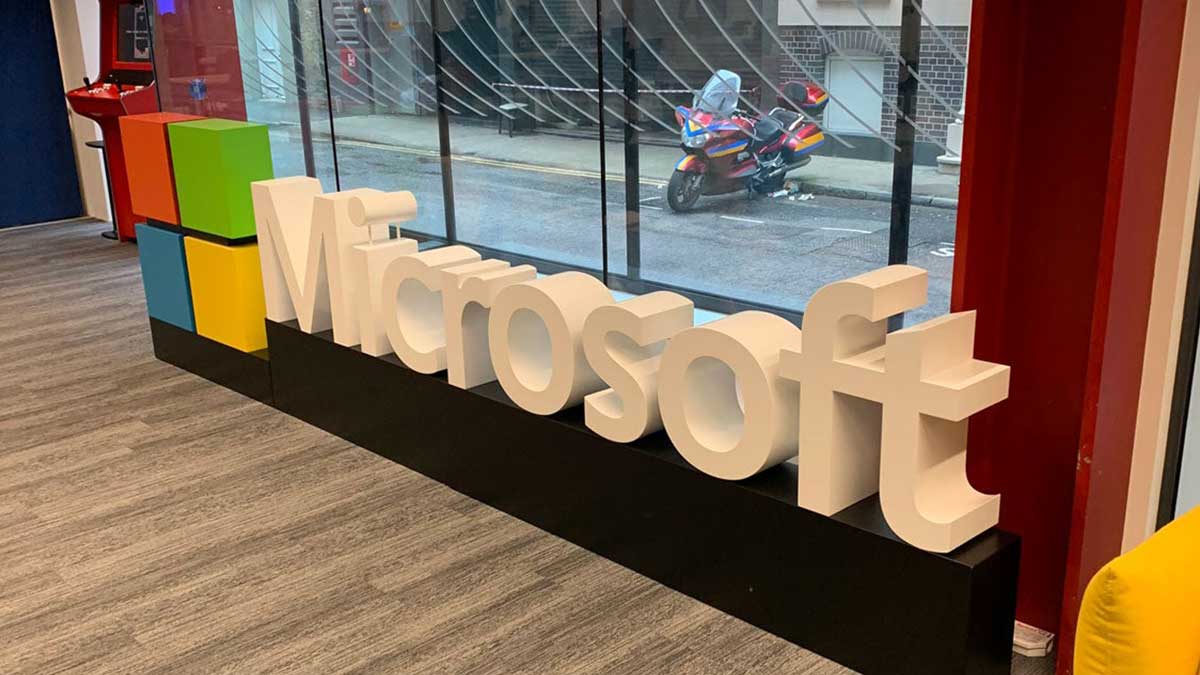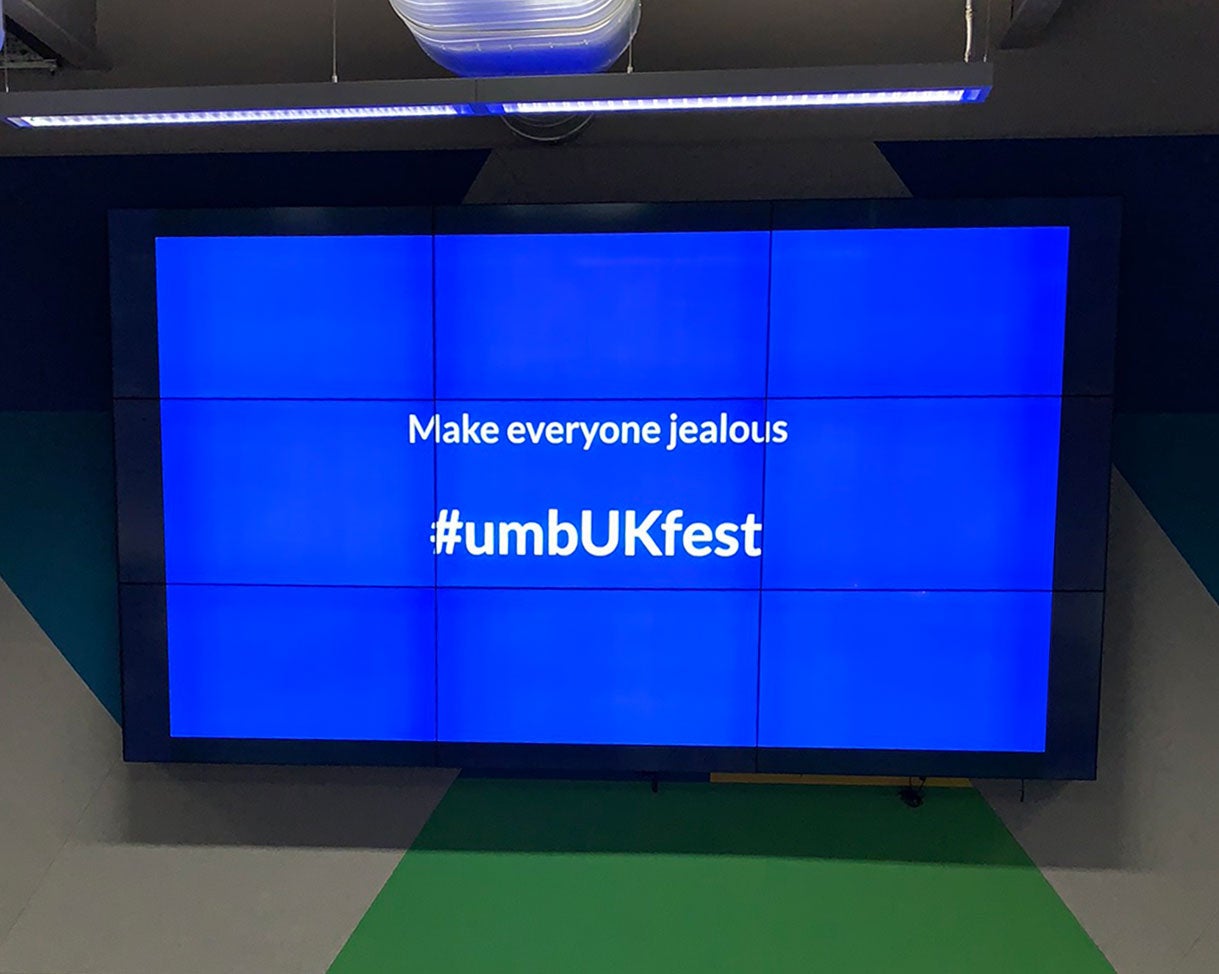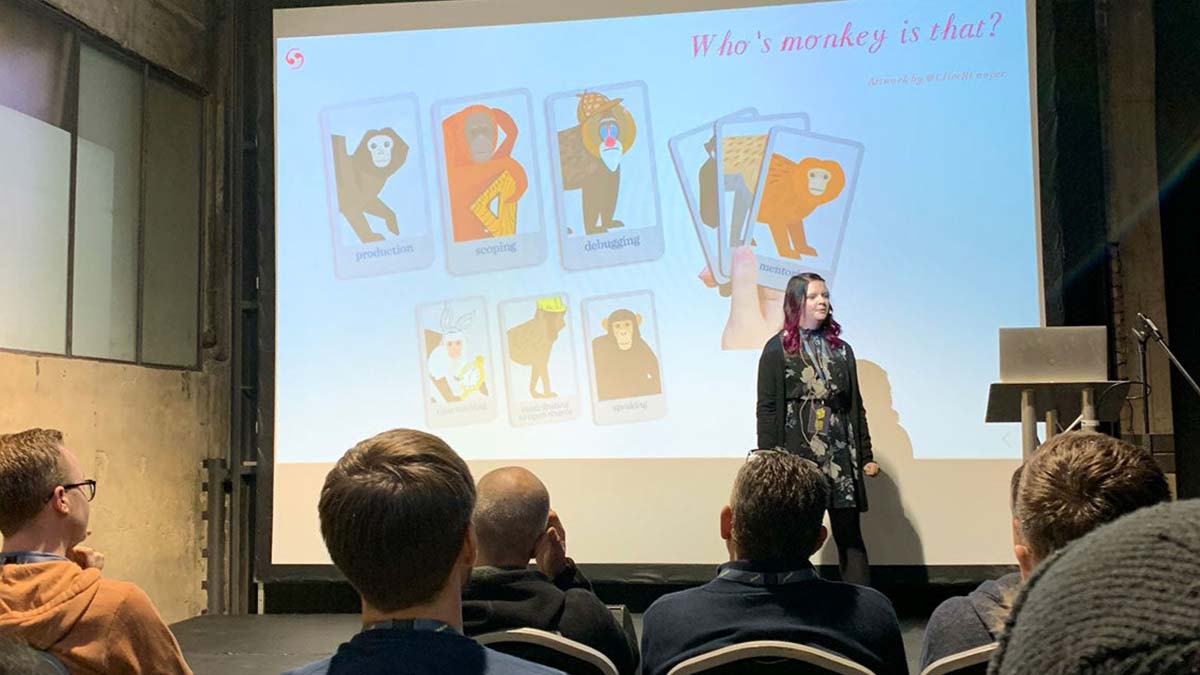The inside scoop from Umbraco UK Festival 2019
After Halloween and Bonfire Night, most people’s attention turns to Christmas and counting down the days to the next holiday. In the world of Umbraco, it’s the countdown to the annual Umbraco UK festival in London. This is the largest community-run Umbraco festival, this year with a record breaking 300 people in attendance, travelling not only from around the UK but from across Europe, with 13 countries represented.
You probably think of Glastonbury, Download, Isle of White or Woodstock when you think of festival, not a tech conference. But this is what makes Umbraco different from other open source projects and CMS platforms. At the heart of Umbraco is an amazing, awesome community who help and collaborate with each other. The tag line for Umbraco is “the friendly CMS”, which isn’t a phrase created by Umbraco HQ or a PR company, but was a phrase coined by a UK developer describing how he felt about Umbraco when he was using it.

Day 1
The festival consists of a two-day event, with the Microsoft Reactor in London being the festival’s home for the first day. There were two highlight informative workshops and a hackathon held over the course of the day, as well as extra open space for people to break away for smaller chats. With an endless supply of tea, coffee and soft drinks, the Umbraco community got to work.
Umbraco Workshop – Migration
I attend the Umbraco 7 to Umbraco 8 migration workshop, which was run by one of the organisers of the festival – Callum Whyte. The workshop was excellent, taking us through an Umbraco 7 site with a mixture of different content types, Umbraco data types and packages which included ones that I use on a regular basis like Nested Content and DocGridEditor. We create our own content within the site and set everything up ready for migration. The next step was to create an Umbraco 8 site with DocGridEditor installed, and then it was time for the big migration. We pointed our newly created Umbraco 8 site to our Umbraco 7 database, ran the site and watched Umbraco upgrade our database.
As we waited for the upgrade to be complete, cheering and clapping could be heard from the other room where another pull request had been submitted from the people at the hackathon. After the installation was complete, we logged into Umbraco and inspected our content. We all quickly noticed that the data in the Dropdown lists and data on the Nested Content values hadn’t migrated over properly. This is due to how the data is stored in Umbraco and the migration tool doesn’t know what to do with this data when migrating. The only option is to delete the property and recreate it, losing any data. However, if you have used Nested Content within DocGridEditor then the data can be transferred successfully. This was all down to how the data is stored as JSON files and the Umbraco Migration tool knows how to migrate that particular data format. We now get a clear indication of what things you need to review in your Umbraco 7 site before migrating, like what data types you’ve used, if any are obsolete and if you are heavily using Nested Content.
You need to ask yourself and your clients what the benefit of moving to Umbraco 8 is, or you need to accept you are going to lose content if you’re using data types or packages that won’t migrate. We also went through another method of migrating a site using uSync, which allowed us to migrate all the document types to an Umbraco 8 instance but not the content.

Lunchtime with Umbraco Leeds
After the morning in the workshop, we all recharged our batteries with some delicious pizza while running through the bug list in Umbraco. The admin team from Umbraco Leeds brought everyone from the group together to have a chat about Umbraco Leeds and October’s Hackathon which removed 330 bugs from Umbraco. We felt our time would be more wisely spent going through our regular admin tasks as well as planning Umbraco Leeds for 2020. We were also told Umbraco Leeds is the second largest regular Umbraco meetup outside of London, which gave us a real boost and reassured us that our dedication is paying off.
Umbraco Gold Partner Summit
Later in the evening, myself and a few of the other gold partners headed for the Umbraco Gold Partner summit where Umbraco HQ updated us on all things Umbraco, with a presentation from quite a few senior members of their team. After the presentation, we were broken into two groups and the room was divided into a business group and a tech group. I attended the tech group, where two gold partners presented their current develop projects in the works. Both talked about deployment pipelines, deploying to Azure and the infrastructure of their websites. This sparked discussions across the whole room and it was great to see how open we all were talking through the different points. Sadly, everyone felt like we didn’t have enough time to talk as in-depth as we’d have liked, so hopefully we can organize something similar again for longer-form discussions.
We then wrapped up the summit with a Q and A before dinner and then heading to the festival’s pre-party. During the dinner, I spent a lot of time talking to Ilham Boulghallat - the Community Engagement Officer at Umbraco HQ. We had some excellent talks about meetups and how we organise Umbraco Leeds, including the difficulty around getting people to attend meetups regularly. We also talked about how it helps developers’ mental health to go to these meetups as it reinforces that you’re not alone, helps to grow confidence in your own abilities and understanding, and shows that people are there to help you. It’s also a great platform to practice talks before talking at festivals or conferences and get feedback from people who’re genuinely interested. All in all, it was a fantastic first day.

Day 2
After a 50-minute walk across London, Greg and I arrived at the festival’s home for day two – Hoxton docks – which reminded me of Codegarden over in Denmark where the annual Umbraco Conference is held by Umbraco HQ.
Registration consisted of getting our lanyard and Umbraco t-shirt which a lot of people collect - one person has a wardrobe full of t-shirts he has collected all over the world. One of the key aspects about this conference was sustainability. Everything at the conference was reusable, so instead of paper coffee cups we were all given travel mugs. If you did choose to forego the travel mug and use a paper coffee cup instead, it was 100% biodegradable. As ever with any Umbraco event, all the food served at the conference was delicious, but this time it was also vegan to help reduce the environmental impact. And, in a first for UK festivals, the food was actually hot. Crazy stuff!
Talks from the Umbraco Community
With 23 speakers and a promising keynote talk lined up, the Umbraco community was prepared and excited for a great day of learning and sharing. The first talk I went to was held by Sebastiaan Janssen from Umbraco HQ, titled ‘The Tools of Our Trade - Lifehacker, Umbraco Edition’. After years of first-hand training from Umbraco and collaborating with people at Hackathons, he had lots of tips and tricks on how to make your life easier as a developer and give his opinion on the crucial dos and don’ts. He was also very open, asking people to speak to him afterwards if they had any different views on best practice they wanted to share. It was a great talk and the perfect start to the day.
At the same time, Jeffrey Schoemaker was in the other room taking people through ‘uMarketing – a new marketing package’ from Umbraco which includes personalization, AB testing and a lot more. Throughout the day, the festival was abuzz with talk about this new offering. In many people’s eyes, uMarketing fills the gap that Umbraco has when competing with other platforms like Episerver.
I then went to a talk by Callum Whyte on ‘Globally Resilient Umbraco Websites’, a brilliant talk about how to set up Umbraco websites with a focus on global scaling and how to account for failover. His demo showed off Azure Front Door, which sounded like an amazing service which I can’t wait to investigate further and use with clients. Lars-Erk Aabech then talked about dependency injection, which was as mind-blowing as every other talk by Lars that I’ve attended in the past. As well as explaining dependency injection, he also walked through the new capabilities of Umbraco 8, like using light inject as well as going through his hopes for the future of Umbraco DI. Swappable containers please, Umbraco?

Just before lunch, Laura Weatherhead delivered an amazing talk about ‘Debugging the Brain’. The passion and detail she delivered in this talk was amazing. Going through the different emotions of being a developer, discussing the highs and lows plus all the scenarios that everyone in the room could relate to on a personal level. Her examples of how we can overcome these issues and negative feelings we encounter were amazing, and I fully intend on watching this talk again.
After an excellent vegan lunch and talking to quite a few new faces, I went to Matt Brailsford talk on ‘Vendr’, which is the replacement for Tea Commerce in Umbraco 8. Matt’s talk wasn’t a huge demo of Vendr, but instead focused on explaining how to choose the right commerce platform for your project. Matt also went into great detail around how he went about the changes he has made while retaining the heart of Tea Commerce. Integrating Vendr with Umbraco is seemingly seamless to the client and is even called commerce throughout so as to not to confuse the user, with its settings integrated into the main settings section of Umbraco. Vendr is planned to be launched in March next year and as a developer, I can’t wait to see what it can do.
Before Niels’ hilarious and informative keynote and general update on Umbraco, Dylan Beattie gave a great talk about ‘The Cost of Code’. This centered around explaining how the code we write effects the world, and provided tangible examples like how the race for new mobile phones and computers is destroying the planet. This gave every attendee some crucial points to takeaway and consider the impact tech is having on a grander scale. I recommend that everyone watches this talk, no matter what your job role is or what industry you’re in.
There were countless talks that I couldn’t attend, but luckily for both me and anyone who couldn’t attend every talk was recorded and will be made available online very soon. I’ve already got several of the talks I missed planned in to watch, as well as others to rewatch and properly dive in to.
Key takeaways from Umbraco UK Festival
My 2019 Umbraco UK festival experience was invaluable, from the workshops I attended to talking with members of Umbraco HQ, and each of the talks I went to. But speaking to other people in the Umbraco community, knowing as a developer you’re not alone, knowing that what are you doing is right and were all in the same boat. Learning ways you can improve your life as a developer. That’s the real benefit of the Umbraco UK Festival. A sense of community. After leaving the festival feeling inspired with lots of new ideas and techniques to try, I’m incredibly grateful that I got to attend.
Our insights
Tap into our latest thinking to discover the newest trends, innovations, and opinions direct from our team.